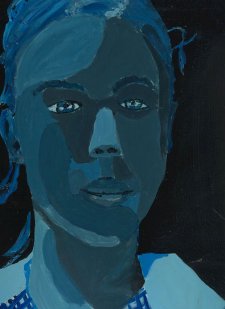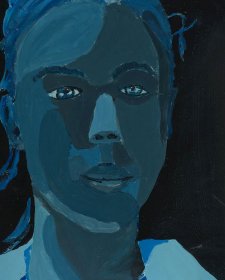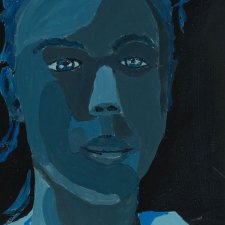Art making may be described as the process of responding to observations, ideas, feelings, and other experiences by creating works of art through the skilful, thoughtful, and imaginative application of tools and techniques to various media.
There is a variety of forms students use to conceptualise and mediate their experience of the world and to express what they have learned about it. Portraiture is a valuable art form for understanding the ideas that secondary students engage with, their observations and thoughts, their relationships. It is a meaningful way for students to investigate various unique aspects of their view of self, perceptions of friends, family and celebrity, their fears and hopes.
For Headspace several students have produced works that refer to the world of art, to past portrait traditions and the work of artists they have admired. Through visual inquiry and reflection many students have produced self-portraits, looking closely at their physical appearance, changing their appearance in various ways, and using different media to express their understanding of the elements of their self identity. The students' messages vary widely and the expressive qualities are augmented by the materials they have chosen to express them.
The works exhibited in Headspace reflect a wide variety of styles, media, and techniques. The exhibited portraits, produced in schools over the past three months, were selected from a large body of work submitted by teachers and students. The key selection criteria used were that the works represent a creative and innovative engagement with the domain of portraiture while fusing technical skill, conceptual development and aesthetic capability. The materials and production techniques of works in Headspace include painting, printmaking, photography, drawing, digital imaging, mixed media and ceramics.
One of the goals of Headspace is to awaken vision to the possibilities of exploration of a wide cross-section of media, including 'new' technologies such as digital imaging. The task of learning how to 'control' various media requires sophisticated and complex forms of cognition, including process; the ability to determine what must precede what in the execution of a work of art.
Experiments with media provide students with an understanding that the nature of the material they are working with can itself be a motivating factor that leads an artist to a new idea. Familiarity with a range of media gives students the opportunity to develop ideas into visual statements. In Headspace it is evident that students have analysed the visual qualities of ideas and feelings they want to express; analysed the properties of different media; and selected the media that most enhance their expression.
We congratulate the students on the excellence of their work and thank them, their teachers and parents for their contribution to the presentation of Headspace.
Pamela Clelland Gray and Maria Gravias













